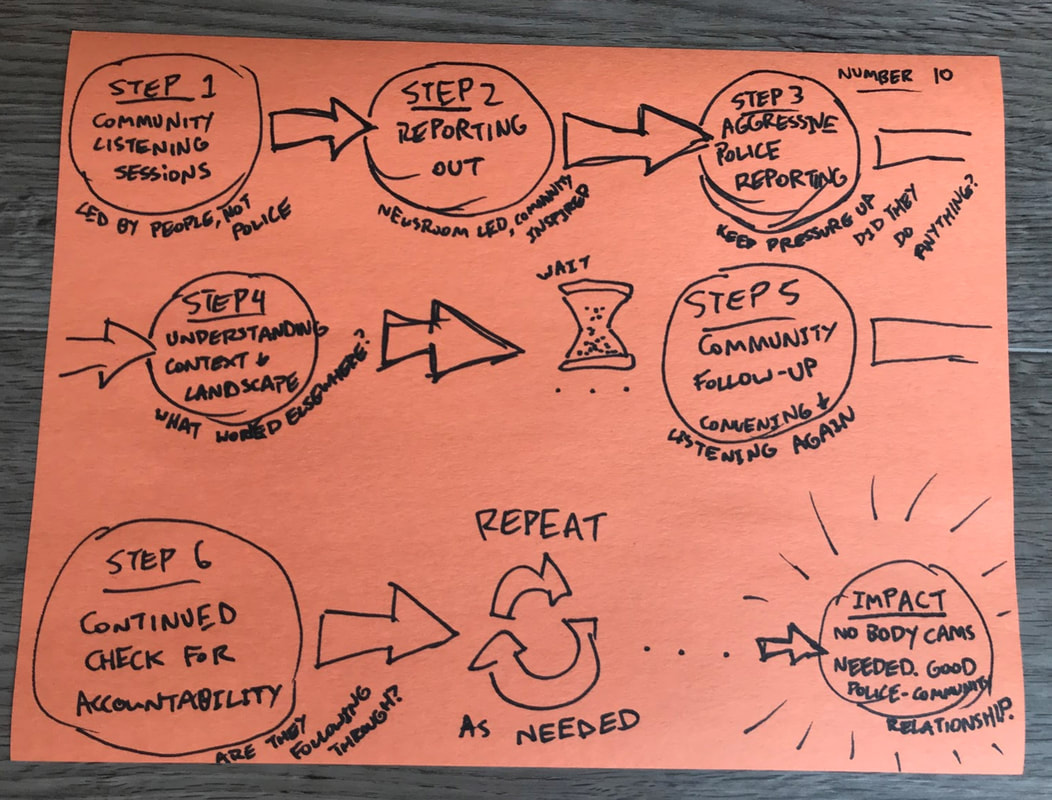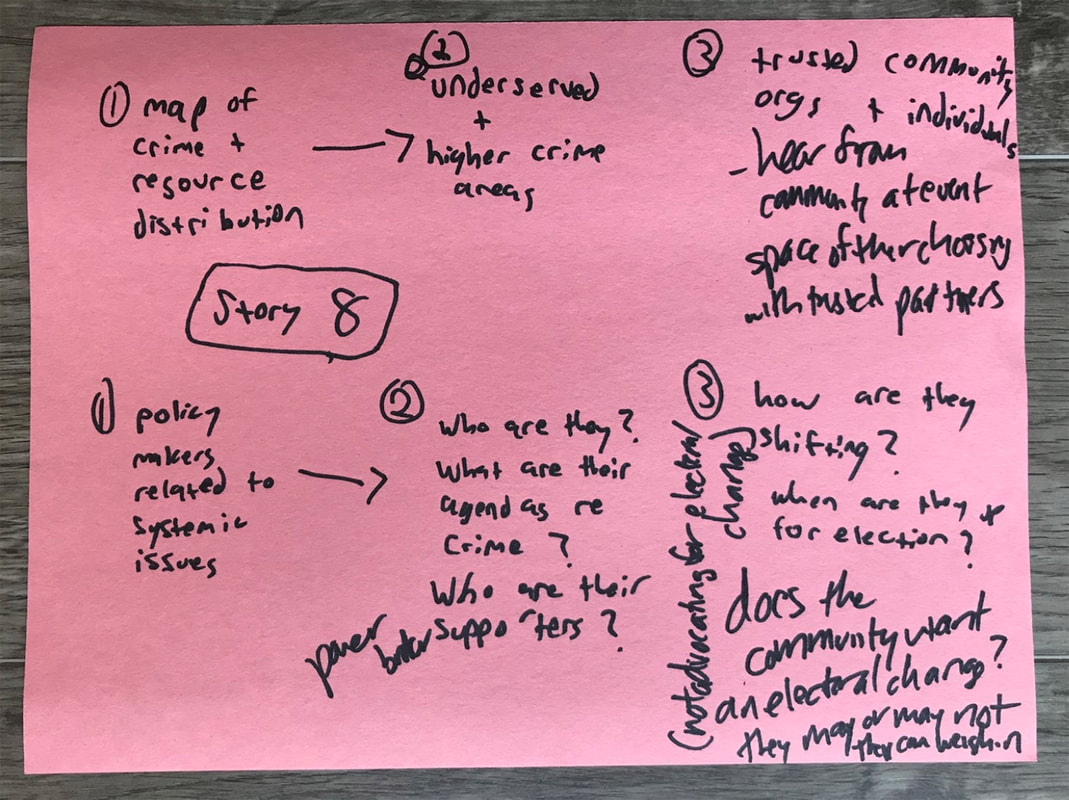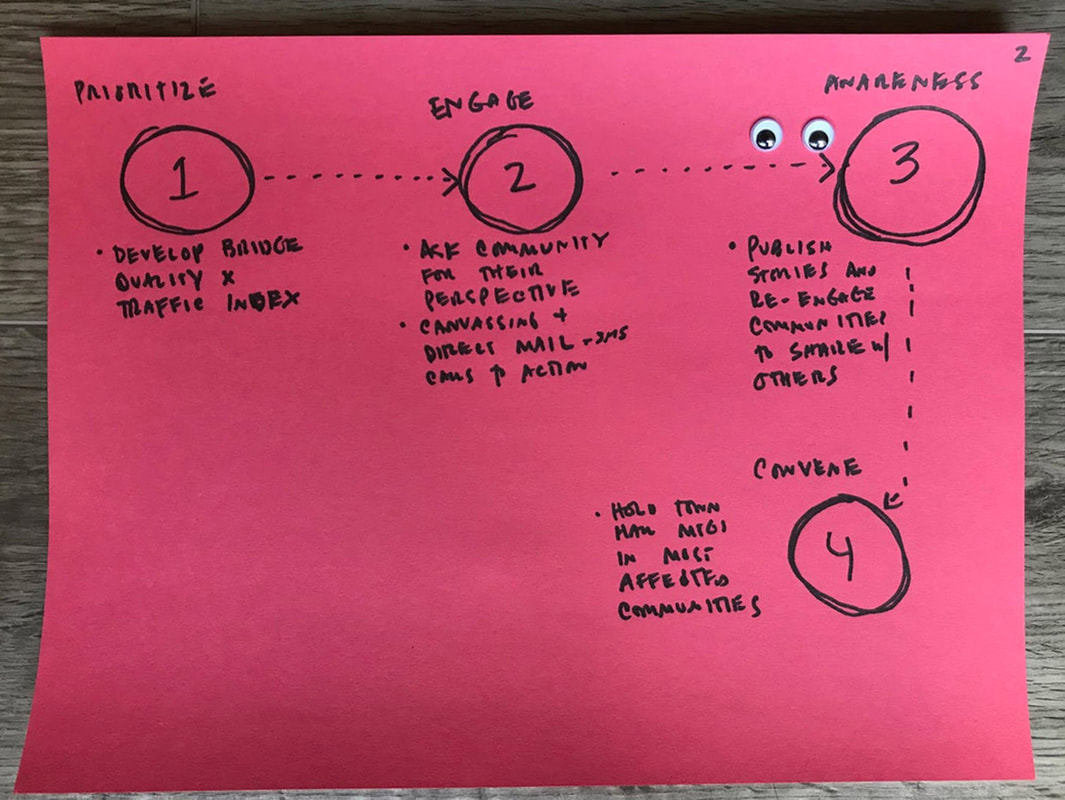|
By Anjanette Delgado The first question I ask when talking about impact journalism is who holds the power. Who has the power in the story? Who can make change? And who’s most affected by that? Questioning those in power is a no-brainer in investigative reporting — just as strategizing how to reach them should be when designing a story or project for impact. Cole Goins and Kayla Christopherson think about power, too, but they take a step back and look at the entire system. How are everyone and everything connected? Who holds the power in the system? And what role does journalism play in that? You might recognize some of this language: System. Role. Connection. Goins and Christopherson’s work — at the New School’s Journalism + Design hub in Manhattan, in newsrooms and at conferences — centers on systems thinking. Support comes from the Knight Foundation and the Democracy Fund. “We came to this sort of organically,” Christopherson said when we talked this fall. “My background is not in journalism but in systems thinking — systems thinking to understand complex processes.” Distributing the power
Systems thinking is a way of analyzing problems and structures by looking at how its interconnected parts relate. For example, your organs work together to digest food. I live in Detroit, where people worked together on the first assembly line to build cars. One of the most celebrated books on the matter is “Thinking in Systems” by Donella Meadows. (If you’d like to dig deeper, I suggest reading it or checking out these additional resources.) Meadows outlines 9 leverage points in a system — 9 places you can intervene — and ranks them from least to most effective. Fifth on her list is information flows — how information moves and who has access. That’s where journalism fits in. “The role of journalism is to provide communities with information,” Christopherson said. “By taking a systems approach to information, you are providing your communities with the most strategic information.” People can decide what to do with that information, said Goins, who cites the author David Peter Stroh as an inspiration here. “We’re just convening the conversation.” By focusing on that role, journalists begin to see the power they have in a system, in their communities, and how they can distribute the power by sharing information, by equipping people to make decisions instead of just engaging them. Christopherson said she’s starting to think, too, of what people do with the information as the end product rather than the journalism itself. That, she said, was a light-bulb moment. “When this happens you can be more transparent about what your goals are … and where people see value in your output,” Goins said. Goins is a journalist who once worked at the Center for Investigative Reporting, a newsroom often cited for its trailblazing work in impact tracking. He thinks of this work as “being more deliberate and active” about our roles as journalists. With systems thinking, he said, impact is not a single change but whether or how the larger system itself is affected. Equity and inclusion. Root causes. For example, after our corruption investigation the mayor resigned but has our work really helped to change the system to keep this from happening again? Remember that classic scene in the movie “Spotlight” where Liev Schreiber/Marty Baron tells the reporters to go after the institution, not the individuals? “Practice and policy,” he says. “Show me the church manipulated the system so that these guys wouldn’t have to face charges. … Show me that this was systemic, that it came from the top down.” We’re they’re headed Christopherson and Goins first spoke about systems thinking and journalism last summer at SRCCON in Minneapolis. They spoke again this fall, first at a Table Stakes convening in New Orleans in September and then at the People Powered Publishers Conference in Chicago in November. [1] [MORE: Designing for impact at SRCCON.] “I’m energized by depth of conversation and questions people are asking,” Christopherson said. “Clearly there’s a space for this kind of work in journalism. [SRCCON] gave us the green light to say let’s go deeper, make this more public.” Journalism + Design, led by founding director Heather Chaplin, introduces some of these ideas in its classes and for educators, too. A few directions they’re heading in: ● Rethinking the role journalists have and how they can use that power. ● Rethinking the structure within newsrooms so that decisions are more democratic than hierarchical, giving everyone some power and agency.[2] ● Bringing in community members to share the power.[3] “A different kind of information flow is just bringing people together who are in the same system but don’t normally talk to each other,” Goins said. ● Mapping the “wicked problems” in journalism and how they’re interconnected. “This is very much experimental,” Christopherson said. “Systems thinking is proven in other fields, but the idea of bringing journalism into that is very new.” “Everyone in the system has agency,” Goins said. “Part of this is discovery of what power I have to make change.” Clarification here: SRCCON wasn't our first session on systems + journalism. We began hosting workshops on systems thinking and journalism in mid-2018, and have so far held about two dozen workshops with journalists and newsrooms across the country. SRCCON was one of our first times focusing specifically on journalism and systems change, which is a direction we're trying to head more. Here are the notes from that session: https://etherpad.opennews.org/p/SRCCON2019-catalysts-for-change This is true, though at a higher-level, we're focusing on using systems thinking as a way to spark structural change internally. You could rephrase to something like: Giving journalists tools to think of their own newsrooms as complex systems and identify opportunities for structural change. I'd suggest rephrasing this to be more about how we're helping newsrooms use systems and stakeholder mapping as a strategy for taking a more active role in facilitating impact, something like: Supporting opportunities for journalists to convene and engage stakeholders across a particular system in surfacing and evaluating opportunities for structural change. Anjanette Delgado is the senior news director for digital at the Detroit Free Press and freep.com, part of the USA Today Network. Twitter: @anjdelgado. You can reach Cole Goins and Kayla Christopherson on Twitter at @colegoins and @kaylachristoph. ### |
AuthorWrite something about yourself. No need to be fancy, just an overview. Archives
December 2023
Categories
All
|




 RSS Feed
RSS Feed